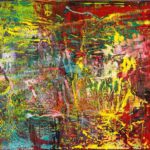Thaís Catoira, (Doutoranda), Programa de Pós-Graduação em Ciência da Informação do Centro de Ciências Sociais Aplicadas da Universidade Federal da Paraíba, João Pessoa, PB, Brazil
 Researchers from the Federal University of Paraíba (UFPB), João Pessoa ‒ PB campus, recently published a study entitled “The importance of a differentiated representation of information for Contemporary Art: Use of fruition as a classification attribute” in the scientific journal TransInformação, Volume 28, Number 3 of 2016, presenting new expectations for professionals who work in the classification and cataloging of information, proposing a new relationship between subject and object, information and art, through fruition. The research, which led to this new informational attribute, was carried out in the process of organizing and systematizing the collection of the Núcleo de Arte Contemporânea da Paraíba (NAC/UFPB) between 2010 and 2012.
Researchers from the Federal University of Paraíba (UFPB), João Pessoa ‒ PB campus, recently published a study entitled “The importance of a differentiated representation of information for Contemporary Art: Use of fruition as a classification attribute” in the scientific journal TransInformação, Volume 28, Number 3 of 2016, presenting new expectations for professionals who work in the classification and cataloging of information, proposing a new relationship between subject and object, information and art, through fruition. The research, which led to this new informational attribute, was carried out in the process of organizing and systematizing the collection of the Núcleo de Arte Contemporânea da Paraíba (NAC/UFPB) between 2010 and 2012.
It encourages a collaborative work among professionals working in different fields, whose promotion would bring a unique experience for symbolic construction of information representation, the study proposes a new perspective for the classification of contemporary art works in their different institutional spaces that safeguard them, aiming at minimizing the classification problems diagnosed in the research.
The authors point out that the models and approaches adopted in the classification of art works focus on traditional artistic productions, such as paintings and sculptures, creating categories that prioritize physical structures and artwork works, leaving aside other essential information as concept, criticism, reflection, aesthetics, which involve the artistic productions of Contemporary Art.
In diagnosing these aspects of the Nucleus collection, the research pointed out difficulties in obtaining more specific information about the artists’ books that compose it, which created a limitation in the information representation process.
From a self-analysis of the research itself, the authors draw the attention of information professionals who work with objects of material culture, to think of fruition as a new significant element in the process of interpretation, leading to representation acts and information classification, in cultural institutions as well as in the field of Information Science itself.
They conclude that fruition allows the dialogue between work/subject, causing multiple (re)significations, and that this element would be an exciting alternative for the insertion of new information that involves intangible and conceptual aspects, typical of contemporary works of art.
The research was carried out with the financial support of the Coordination of Improvement of Higher Level Personnel (CAPES), through the Project “10 Dimensions: Dialogues in network, body, art and technology”, contemplated in the CAPES / MINC Public Announcement PROGRAM PRÓ CULTURA – Support Program for Teaching and Scientific Research in Culture.
References
CATOIRA, T. and AZEVEDO NETTO, C. X. The importance of a differentiated representation of information for Contemporary Art: Use of fruition as a classification attribute. Transinformação [online]. 2016, vol.28, n.3, pp.263-274. [viewed 10 March 2017]. ISSN 2318-0889. DOI: 10.1590/2318-08892016000300002. Available from: http://ref.scielo.org/vckh76.
External Link
Transinformação – TINF: www.scielo.br/tinf/
Como citar este post [ISO 690/2010]:


















Recent Comments